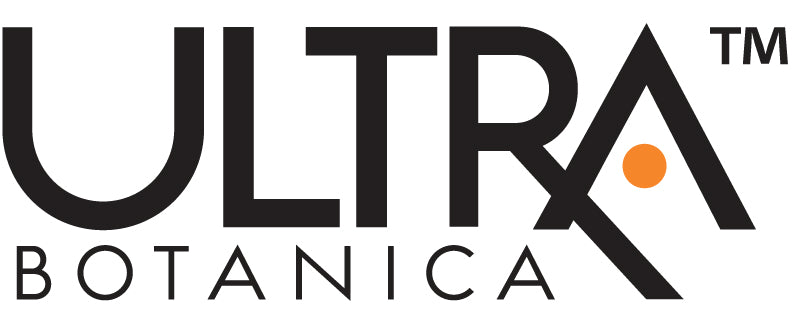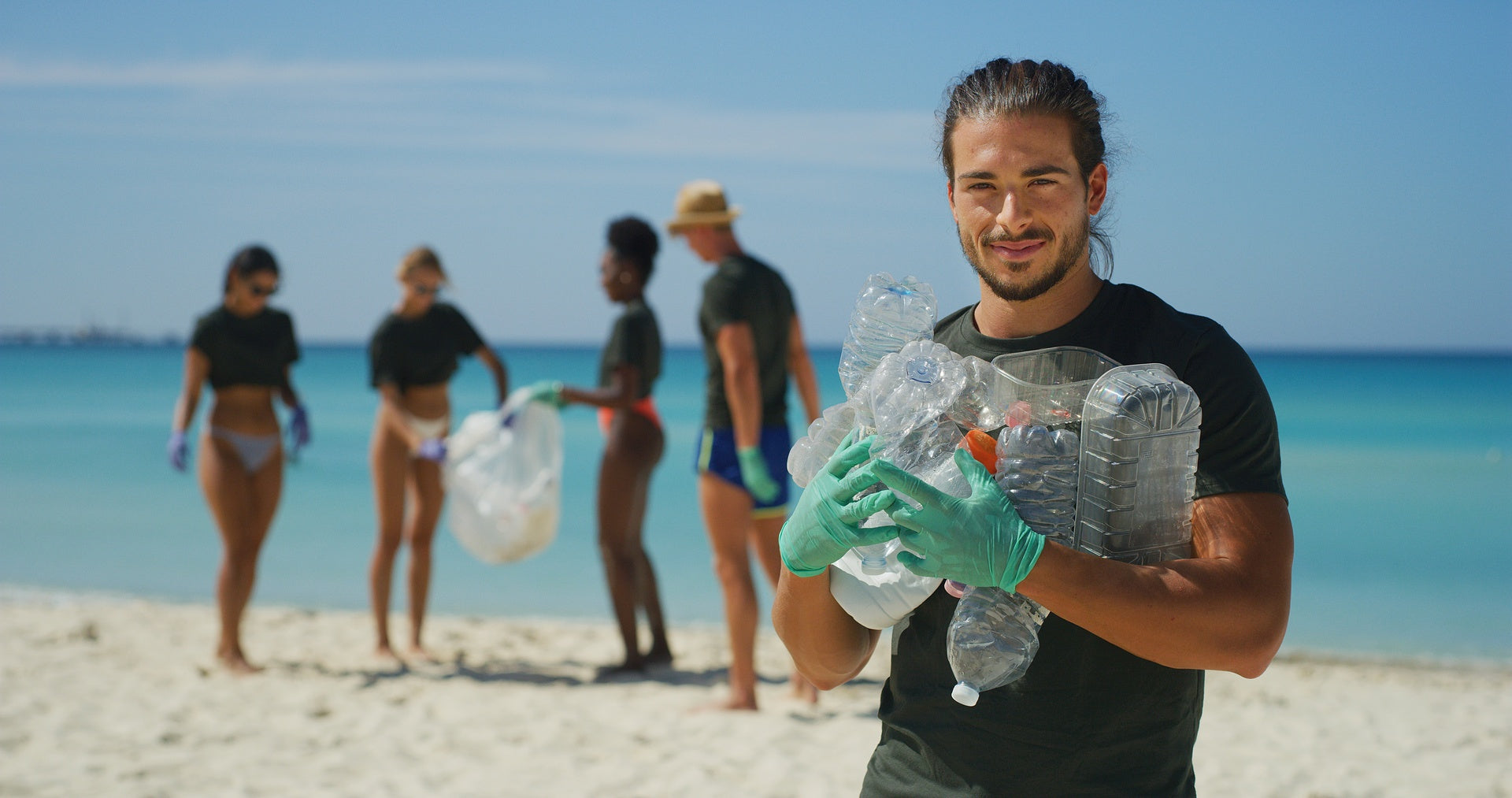Microplastics are everywhere, and the conversation about microplastics dangers is growing louder. They contaminate our food, water, and even the air we breathe.
These tiny plastic particles, often smaller than a sesame seed, present a serious concern for scientists and public health experts worldwide. And should do so for you, too.
As we continue to produce and discard plastic at an alarming rate, the threat of microplastics dangers to our well-being and the environment are becoming impossible to ignore.
The problem of plastic particle pollution has moved from a distant environmental issue to a direct threat to human health.
You might wonder how these microscopic fragments of plastic can be so harmful. The evidence suggests that microplastics pose a wide range of health risks to the human body and the ecosystems we rely upon.
Let's examine the hidden dangers of these pervasive pollutants and what we can do to protect ourselves.
What Are Microplastics and Where Do They Come From?
Microplastics originate from numerous sources. Some are manufactured at microscopic size, such as the plastic micro-beads common in face scrubs and cleaning products. Most, however, are secondary microplastics that form from the breakdown of larger plastic debris.
Consider the many plastic products used daily, from single-use plastics like water bottles and food containers to synthetic clothing.
As these items degrade from sun exposure and physical wear, they shed countless tiny plastic particles. This constant breakdown contributes to the widespread contamination of our planet. And now, scientists are discovering, our blood too.
The creation of microplastics also occurs during simple daily activities, like washing synthetic fabrics or using certain cosmetics. These particles wash down our drains, enter our waterways, and infiltrate our water systems and the food chain.
Research from leaders in environmental sciences indicates we might be consuming tens of thousands of microplastic particles annually through our diet alone.
Hidden Microplastics Dangers
The true scope of how microplastics affect human health is an active area of research, but the preliminary findings are alarming.
These particles are not benign. They carry a range of potential health risks. From physical irritation to chemical toxicity, the ways microplastics affect the human body are complex and concerning.

1. They're in Our Food and Water
Microplastics have been found in an extensive variety of food products, from seafood and honey to beer and table salt. A well-known study reported finding microplastic particles in 90% of table salt brands tested globally.
These particles easily enter our bodies through the food we eat and the drinking water we consume.
The contamination is not limited to processed foods. Fruits and vegetables can absorb microplastics through their root systems from contaminated soil and water. This means that even a healthy, plant-based diet may offer exposure to these unwanted materials.
2. They Can Harm Our Health
The health impacts of ingesting plastic are a major focus for public health, and the initial research points to multiple dangers.
Some studies suggest that microplastics can cause inflammation and damage to our cells, potentially disrupting normal bodily functions. They may also act as carriers for harmful chemicals and pathogens by introducing them into the human body.
A comprehensive review linked microplastics exposure to oxidative stress, DNA damage, and inflammation in human cell cultures. Over time, these effects could contribute to chronic health issues and increase the risk of serious diseases.
The long-term health effects are still being investigated, but the potential for harm is clear.
3. Recent Studies Link Microplastics to Severe Human Health Risks
Recent scientific breakthroughs have provided a clearer picture of the dangers.
A landmark study published in the New England Journal of Medicine found that microplastics detected in blood vessels were associated with a much higher risk of heart attack, stroke, or death.
This was one of the first major studies to directly link the presence of microplastics in humans to clinical outcomes.
Researchers in Italy studied patients undergoing surgery for cardiovascular disease and found that nearly 60% had measurable quantities of polyethylene in the plaque removed from their arteries.
People with microplastics in their plaque had more than four times the risk of suffering a major cardiovascular event. These preliminary findings highlight an urgent need to understand how these particles contribute to severe health conditions.
Another area of concern is respiratory health. Studies have confirmed the presence of microplastics deep within human lung tissue, likely from inhalation.
While the full impact is unknown, experts worry these particles could cause chronic inflammation, fibrosis, or even increase the risk of lung cancer over a lifetime of exposure.

4. They're Disrupting Ecosystems
The problem of microplastics extends far beyond direct human health. These particles are causing significant disruption in ecosystems globally, particularly in the marine environment.
Marine animals often mistake plastic for food, which can lead to malnutrition, internal injuries, and even death.
When fish larvae consume microplastics instead of their natural food sources, it stunts their growth and reduces their survival rates, affecting the entire food chain.
Such disruption at the bottom of the pyramid has cascading effects, threatening the stability of entire marine populations. The health of our oceans is directly tied to the issue of plastic pollution.
5. They're Everywhere in the Environment
Microplastics have been discovered in the most remote locations on Earth, proving their ability to travel far and wide.
Researchers have found these tiny plastic particles in Arctic snow, Antarctic sea ice, and even at the summit of Mount Everest. This widespread contamination shows how air and water currents spread microplastics across the globe.
Airborne microplastics are a growing concern, as we may inhale them without realizing it. A study from San Francisco found that microplastics from synthetic clothing fibers and tire dust were significant sources of particle pollution in the area.
These findings suggest that urban environments may be hotspots for airborne microplastics exposure.
6. They Can Absorb and Release Toxic Chemicals
Microplastics act like small sponges, absorbing persistent organic pollutants and toxic chemicals from their surroundings.
These substances can include pesticides, industrial chemicals like PCBs, and heavy metals. Plastic doesn't just pollute on its own; it also concentrates other pollutants.
When marine life or humans ingest these contaminated plastic particles, the absorbed toxic substances can be released into their tissues.
This process creates a trojan horse effect, delivering a concentrated dose of toxins directly into the body. The toxic effects of these chemicals can range from endocrine disruption to nervous system damage.

Potential Health Impacts of Microplastic Exposure
While research is ongoing, scientists have identified several ways microplastic exposure can harm human health. The particles themselves can cause physical stress when they embed themselves on cells and tissues.
What's more, both the chemical additives in plastics and the environmental toxins they absorb pose significant health risks. Some of the potential adverse health effects currently being investigated by the scientific community include:
-
Gastrointestinal Tract – May cause inflammation, disrupt the gut microbiome, and physically damage the intestinal lining, potentially impairing nutrient absorption and metabolic function.
-
Cardiovascular System – Detected in blood vessels and arterial plaque, microplastics have been linked to a higher risk of heart attack and stroke. Chronic inflammation may contribute to cardiovascular disease.
-
Respiratory Health – Inhaled microplastics can lodge deep in the lungs, possibly leading to persistent inflammation, fibrosis, and an increased risk of respiratory diseases like lung cancer.
-
Endocrine System – Chemicals such as BPA and phthalates, often leached from plastics, act as endocrine disruptors, interfering with hormone balance, fertility, and developmental processes.
-
Cellular Health – Microplastics, including polystyrene nanoparticles, may trigger oxidative stress and cellular damage, with some evidence suggesting they can even alter gene expression.
How Can We Protect Ourselves from Microplastics?
While it is nearly impossible to completely avoid microplastics, we can take numerous meaningful steps to reduce our own personal exposure.
Making informed choices in our daily habits can significantly lower the amount of plastic particles we ingest and inhale. These actions also help reduce the overall burden of plastic pollution on everyone else in the world.
Here are some practical ways you can reduce plastic in your life:
- Filter your drinking water. Use a high-quality water filter certified to remove particles smaller than one micron. Carbon block or reverse osmosis filters are often effective.
- Avoid single-use plastics. Opt for reusable glass or stainless steel water bottles and coffee cups, reuseable shopping bags, and glass food storage containers whenever possible.
- Choose natural fibers. When buying clothes, select materials like cotton, wool, linen, or hemp over synthetics like polyester and nylon to reduce fiber shedding during washing.
- Be mindful of your food choices. Since microplastics accumulate in the marine food chain, moderating seafood consumption can help.
- Never heat food in plastic containers. Heat can cause chemicals and particles to leach into your food.
- Avoid plastic cutting boards. As plastic cutting boards break down, you ingest those microplastics with every bite.
- Check your personal care products. The European Union and other regions have taken steps to ban plastic micro-beads intentionally added to cosmetics. In the U.S., always check labels for ingredients like polyethylene or polypropylene and make buying decisions to avoid them.
- Improve indoor air quality. Dust and vacuum regularly with a HEPA filter to capture airborne microplastics that settle in your home. Also use an air purifier.

The Bigger Picture: Tackling the Microplastic Problem
Addressing the dangers of microplastics requires action on multiple levels, involving individuals, corporations, and governments.
Reducing human exposure is critical, but the ultimate goal is to stop the flow of plastic into the environment. This is a central challenge for sustainable development in the 21st century.
Many might argue that policy is the most powerful tool. Some countries have taken positive steps, such as banning microbeads or implementing fees for plastic bags.
But a more comprehensive approach is needed to manage the entire lifecycle of plastic, from production to disposal.
Researchers are working on innovative solutions to clean up existing plastic pollution. For instance, some scientists are developing methods using magnetism or sound waves to aggregate and remove microplastics from water.
While promising, these technologies must be scaled up to make a meaningful impact on a global scale.
The Role of Plastic Reduction and Recycling
One of the most effective ways to combat the microplastic problem is to curb our personal reliance on plastics. Which means making conscious choices to support businesses that use minimal or plastic-free packaging.
When we choose reusables over disposables, we send a powerful message to the market.
Recycling is also a crucial part of managing plastic waste. When we recycle plastics correctly, we prevent them from ending up in landfills or oceans, where they break down into microplastics.
Bear in mind, though, that recycling is not a perfect solution, as not all plastics are recyclable, and the process itself can generate microplastic particles.

The Future of Microplastics Research
As awareness of the microplastic crisis grows, so does the research dedicated to understanding and solving it.
Scientists are developing better methods to detect and quantify microplastics in everything from human blood to arctic ice. These tools are essential to accurately assess the scale of the problem and the level of human exposure.
Animal studies continue to provide valuable insights into the potential toxic effects of different types of plastics, such as polystyrene microplastic and even smaller polystyrene nanoparticles.
Research helps regulators understand the specific health risks associated with different materials. The field of environmental science is rapidly evolving to meet this challenge.
Ultimately, the future may lie in developing truly biodegradable and non-toxic alternatives to conventional plastics. These materials would hopefully break down into harmless substances, preventing the formation of persistent microplastics.
Investing in green chemistry and circular economy models is essential for long-term sustainable development.
Conclusion
The dangers of microplastics are real, pervasive, and deeply concerning. These tiny plastic particles have infiltrated every part of our planet; from the food we eat to the air we breathe.
While scientists continue to study the full extent of their impact, the evidence we have demands immediate action to protect human health and the environment. The challenge of plastic pollution can feel immense, but there is reason for hope.
By making conscious choices in our own daily lives to curtail plastic use, supporting innovative research, and advocating for stronger regulations, we can work toward a future with less plastic waste and risk of microplastics.
Remember, every action each person takes to reduce plastics contributes to a healthier planet for everyone. Let's all do our part to confront the issue of microplastics head-on.
Our collective efforts can turn the tide on plastic pollution and safeguard our health from these invisible invaders. The fight against microplastics is a fight for a cleaner, safer, and more sustainable world.

Frequently Asked Questions
1. How do microplastics enter the human body?
Microplastics can enter the body through multiple routes—primarily ingestion and inhalation. We consume them through contaminated food and water, such as seafood, fruits, vegetables, table salt, and even beer.
Airborne particles from synthetic fabrics or tire dust can also be inhaled and lodge deep in the lungs, making exposure nearly unavoidable in modern life.
2. Are microplastics harmful to human health?
Yes, research shows that microplastics can cause inflammation, oxidative stress, and cellular damage. They may also carry toxic chemicals or pathogens into the body.
Recent studies have linked microplastics in the bloodstream and arterial plaque to increased risks of heart attack, stroke, and chronic diseases. While long-term effects are still being studied, early findings suggest significant health risks, making it wise to determine ways to personally avoid as much exposure as possible.
3. Why should we be concerned about the widespread presence of microplastics?
Microplastics have infiltrated nearly every part of our environment—from Arctic snow to Mount Everest—and have been found in food, water, and the air we breathe. Their ability to absorb and release harmful chemicals adds another layer of risk.
Combined with their links to inflammation, endocrine disruption, and cardiovascular damage, the microplastics dangers to human health and ecosystems are becoming harder to ignore.





Share:
Curcumin Myths: Facts on Bioavailability and Health
Exploring Curcumin Heart Health: Benefits and Insights